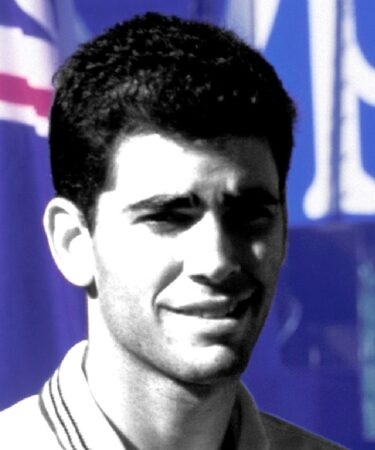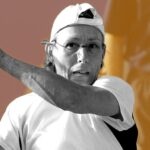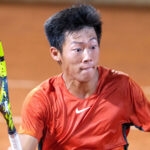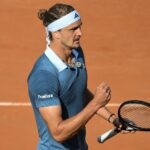December 3, 1995: The day Pete Sampras found his feet on clay and won the Davis Cup
Every day Tennis Majors takes you back in time to celebrate a great moment in tennis history. Today, we go back to 1995 to witness how Pete Sampras closed an exceptional weekend, defeating Yevgeny Kafelnikov to clinch the Davis Cup, having already won in singles and doubles on the previous days
 © DAVE CAULKIN/AP/SIPA
© DAVE CAULKIN/AP/SIPA
What happened exactly on that day?
On this day, December 3, 1995, Pete Sampras, world No 1 at the time, delivered an exquisite performance on his least favourite surface, clay, to defeat Yevgeny Kafelnikov in straight sets (6-2, 6-4, 7-6) and clinch the Davis Cup title. Until his team-mate Andre Agassi withdrew, Sampras was not even supposed to play singles in this final, played in Moscow on red dirt. In the end, he ended up winning a five-set battle on Friday against Andrei Chesnokov (3-6, 6-4, 6-3, 6-7, 6-4), the doubles rubber on Saturday (partnering Todd Martin), before putting the cherry on top with this last win on Sunday.
The players: Pete Sampras and Yevgeny Kafelnikov
- Pete Sampras: Genius on grass, clay-court novice
Pete Sampras, born in 1971, dominated the game in the 1990s. After a first Grand Slam victory at the 1990 US Open (where he became the youngest champion of all-time, defeating compatriot Andre Agassi in the final, 6-4, 6-3, 6-2), he became world No 1 in April 1993.
He then ended the next three seasons (1993-1995) as world No 1. His serve-and-volley game was particularly lethal on the All England Club grass, where he won three consecutive titles between 1993 and 1995, winning 21 matches in a row. Sampras triumphed three times at the US Open (1990, 1993, 1995) and once at the Australian Open, in 1994.
To top that, the American won the Masters Cup twice (1991, 1994), and had accumulated a total of 38 titles in his career, including seven Grand Slams and six Masters 1000 titles. Sampras could have been easily competing to become the greatest of all-time had it not been his obvious weakness on clay: his best performance at Roland-Garros had been reaching the quarter-finals, in 1992, 1993 and 1994.

- Yevgeny Kafelnikov: Russia’s No 1, rising star
Yevgeny Kafelnikov was born in 1974 in Sochi (USSR, now in Russia), on the Black Sea coast. He turned pro in 1992 and claimed his first world-class results in 1994, reaching the semi-finals in Monte-Carlo.
He gained the nickname “the Stakhanovist”, as he was playing a lot more than most of the top players: he played in over 100 singles matches during a season three times during his career, as he often also competed in doubles. In 1995, he became one of the top players, reaching the quarter-finals at both the Australian Open and Wimbledon, and the semi-finals at Roland-Garros (defeated by the eventual champion, Thomas Muster, 6-4, 6-0, 6-4). At the end of the year, he was ranked No 6 in the world.

The place: The Olympic Stadium, Moscow
In 1995, the Davis Cup final was held for the second consecutive year at the Olympic Stadium in Moscow. This stadium was built for the 1980 Summer Olympics to host the basketball and boxing events, and, for the Davis Cup, it had a capacity of 11,400 spectators. Although, in 1994, the final was played on carpet, in 1995, a clay court was mounted to maximize Russian chances against an American team led by Sampras and Agassi.
The facts: Sampras beats Kafelnikov in straight sets
In 1995, for the second consecutive year, Russia hosted the Davis Cup final at the Olympic Stadium. In 1994, on carpet, the Russians had been outclassed by Sweden. This time, the Russian team had chosen clay, the least favourite surface of the two main American players, the two best players in the world at the time, Pete Sampras and Andre Agassi.
As a consequence, the initial plan of the American captain, Tom Gullikson, was to keep Sampras fresh for the doubles, and to have Agassi (twice runner-up at Roland-Garros) and Jim Courier (winner of the French Open in 1991 and 1992) play the singles. However, Agassi was forced to withdraw due to a chest injury, and, as awkward as it sounds, Gullikson was forced to pull Sampras, the world No 1, in for the singles.
Although he had reached the Roland-Garros quarter-finals thrice in the past, Sampras’s 1995 clay-court season had been appalling – he had lost in the first round of four out of the five red-dirt tournaments he attended, including the French Open. However, on the first day of the Davis Cup final, facing Andrei Chesnokov – a renowned clay-court specialist – Sampras pulled out an incredible effort to prevail in five sets (3-6, 6-4, 6-3, 6-7, 6-4). On the match point, the world No 1 collapsed and had to be carried out by his teammates.
After this dramatic first match, and after Jim Courier was defeated in straight sets by Yevgeny Kafelnikov, no one expected Sampras to be back on court on the following day- yet, there he was, and, partnering Todd Martin, the American pair defeated Kafelnikov and Andrei Olhovskiy, two great doubles players, in straight sets (7-5, 6-4, 6-3).
On Sunday, December 3, the world No 1 faced a last but considerable challenge: he could clinch the title if he could defeat Kafelnikov, world No 6 and semi-finalist that year at Roland-Garros. Against all odds, Sampras delivered one of the greatest clay-court performances of his career and outclassed his opponent in every aspect of the game, 6-2, 6-4, 7-6. As a symbol of his dominance, he sealed his victory with a 16th ace, becoming the first American player to score three points in one Davis Cup tie since John McEnroe in 1982.
“Pete played wonderfully today, and he didn’t leave any chances for me,” Kafelnikov said, according to deseret.com.
“I think the Russians were looking at myself as being the weak link on the slow red clay,” Sampras said. “But I played some good tennis when I had to.”
For Sampras and his captain, this victory had an even more special taste, as Tim Gullikson, Sampras’s coach and twin brother of Tom, was fighting brain cancer at the same time.
“Really nothing short of phenomenal,” Tom Gullikson said of Sampras’s performance, according to The New York Times. “For me, personally, it’s been a tough year with my twin brother, Tim, in a much bigger competition fighting really for his life. For us to win this thing is awe . . .”
What next? Sampras starts to dominate; Kafelnikov wins two slams
In the following years, Sampars, who had already won the Davis Cup in 1992, would only play for his country sporadically, and sometimes far from his usual standards raising criticism from some of his peers. At the end of his career, the American would hold 14 Grand Slam titles (a record at the time) and he would have finished six consecutive years as world No 1. However, he would never manage to triumph at Roland-Garros, and, after having reached the semi-finals in Paris in 1996, he would never obtain any great results on red dirt again.
In 1996, Kafelnikov would take his revenge upon Sampras, defeating him in the Roland-Garros semi-finals (7-6, 6-0, 6-2), before beating Michael Stich in the final (7-6, 7-5, 7-6) to become the first-ever Russian male player to win a Grand Slam tournament. In 1999, he would add another major title to his list of achievements at the Australian Open, and in May of the same year, he would become the first-ever Russian player to become world No 1, although he would only occupy the top spot for six weeks. He would have to wait until 2002, almost at the end of his career, to finally win the Davis Cup.













